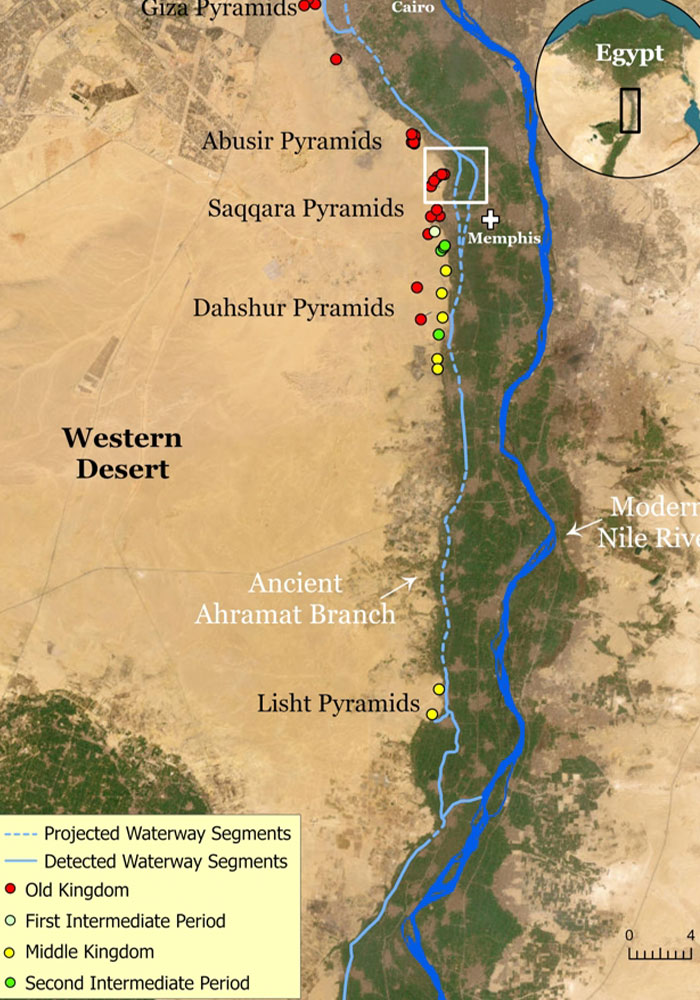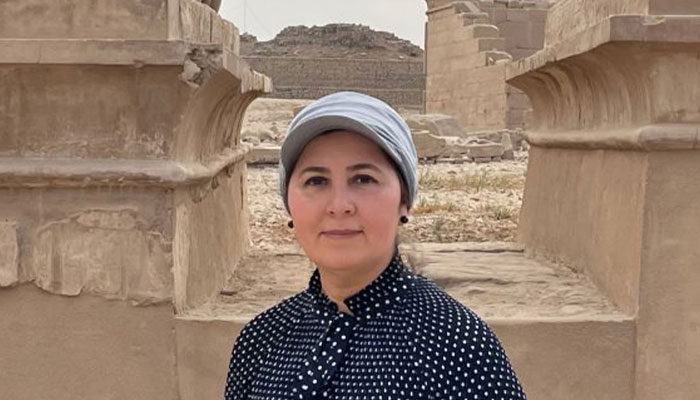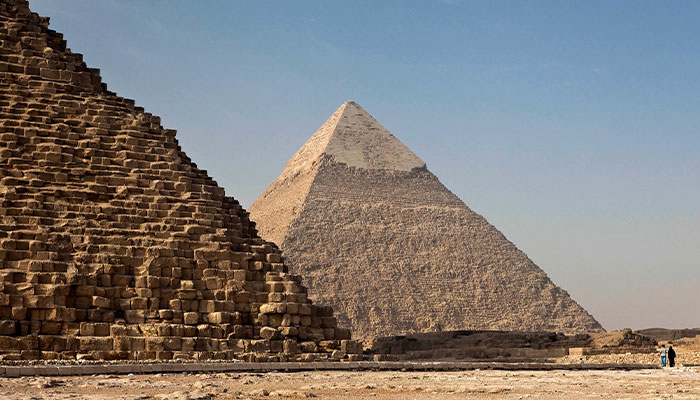Now, they may have found the answer in a long-lost, ancient branch of the River Nile that once flowed alongside more than 30 pyramids in the northeastern corner of Africa. A team from the University of North Carolina Wilmington used radar satellite imagery, historical maps, geophysical surveys, and sediment coring (a technique used by archaeologists to recover evidence from samples) to map the river branch, as per the BBC.
Share iconScientists appear to have finally solved the mystery of how ancient Egyptians built their pyramids
Image credits: CNN The international team of researchers, who published their study in the Communication Earth & Environment journal on May 16, suggested that the ancient river branch was buried by a major drought and sandstorms around 4,200 years ago. The river branch, named the Ahramat branch, with “ahramat” meaning pyramids in Arabic, was roughly 64km (39 miles) long and between 200-700m (656-2,296 ft) wide. It bordered 31 pyramids (including the Great Pyramid of Giza, the largest Egyptian pyramid and oldest of the Seven Wonders of the Ancient World), which were built between 4,700 and 3,700 years ago.
An international team discovered an ancient branch of the River Nile that once flowed alongside 31 pyramids, including the Great Pyramid of Giza
Share icon Image credits: CNN Scientists have long theorized that ancient Egyptians may have used a nearby waterway to transport the enormous materials needed to build the pyramids. “But nobody was certain of the location, the shape, the size or proximity of this mega waterway to the actual pyramids site,” lead study author Eman Ghoneim of the University of North Carolina Wilmington in the United States told AFP.
Scientists have long theorized that Egyptians may have used a nearby waterway to move the heavy materials used to build the pyramids, but nobody was certain of the location
Share icon Image credits: Eman Ghoneim “Locating the actual [river] branch and having the data that shows there was a waterway that could be used for the transportation of heavier blocks, equipment, people, everything, really helps us explain pyramid construction,” Dr Suzanne Onstine, one of the study’s co-authors, told the British broadcaster.
The river branch that connected the pyramids, named the Ahramat branch, was roughly 64km (39 miles) long
Share icon Image credits: Freepik The existence of the river branch would explain why the 31 pyramids were built in a chain along a now inhospitable area of the Nile Valley. Onstine added: “The discovery reminded me about the intimate connection between geography, climate, environment and human behavior.”
“According to my aunt, it was definitely aliens,” a social media user joked
Share icon Share icon Share icon Share icon Share icon Share icon Share icon Share icon Share icon Share icon Anyone can write on Bored Panda. Start writing! Follow Bored Panda on Google News! Follow us on Flipboard.com/@boredpanda!













